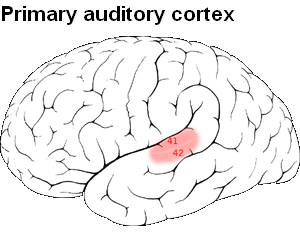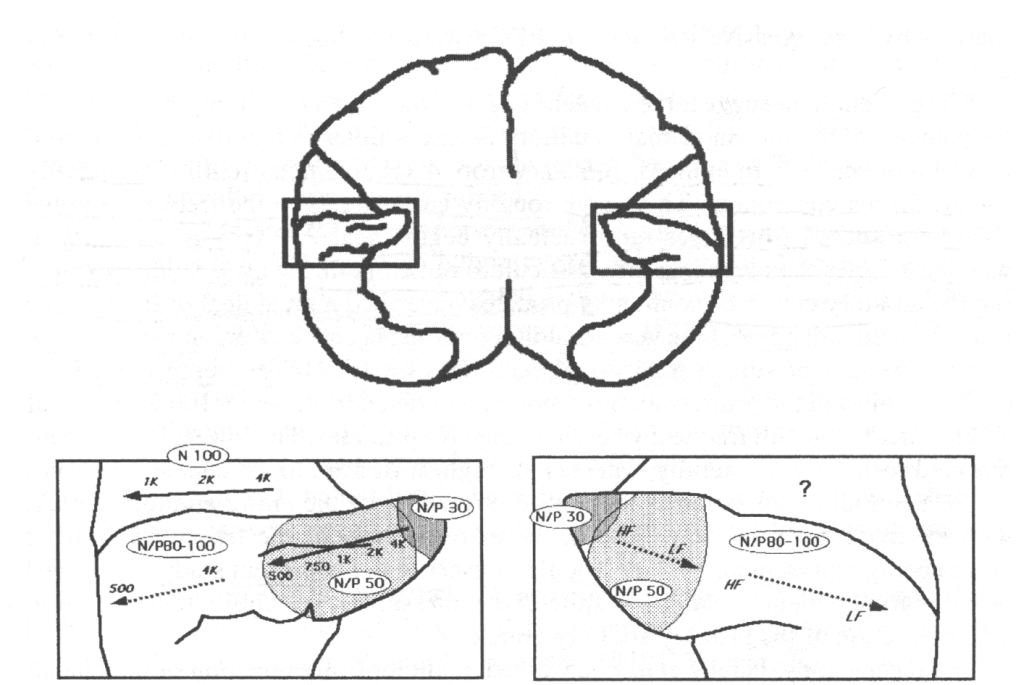Hearing Loss and Central Auditory Processing
49
Learning Objectives
Know where Heschl’s gyrus is.
Be able to describe what tonotopic maps in A1 are.
Heschl’s gyrus is a part of the temporal lobe, and the primary auditory cortex (A1) is located on it, in the superior temporal cortex. The A1 contains tonotopic maps. The word “tonotopic” means that neurons that respond to similar frequencies are close to each other in the cortex. On a fine scale, this is like orientation pinwheels. Retinotopy, the mapping of visual input from the retina to neurons, is an example of this on a more coarse scale. Tonotopic maps can shift with experience. For example, monkeys who get really good at discrimination sounds in a particular frequency band grow fatter cortical representations of that frequency. Additionally, experienced musicians tend to have elaborated A1 maps.

It is important to note that we don’t simply perceive the tones represented in the A1. For example, we perceive the missing fundamental in a series of harmonic tones. The A1 is necessary for pitch perception, but not duration information. Furthermore, it is not sufficient for pitch perception, as damage in the inferior temporal cortex affects our ability to identify tones. The A1 is surrounded by a region of cortex called the Belt area. Neurons in the belt area respond to the combinations of frequency and details of timing that define more complex characteristics of sound.

Here is a video that provides an additional overview on tonotopy!
https://www.youtube.com/watch?v=m-zY7-IJvIQ
CC LICENSED CONTENT, SHARED PREVIOUSLY
Cheryl Olman PSY 3031 Detailed Outline
Provided by: University of Minnesota
Download for free at http://vision.psych.umn.edu/users/caolman/courses/PSY3031/
License of original source: CC Attribution 4.0
Adapted by: Maida Fazlic

